Transitioning from volume- to value-based care delivery

Cleveland Clinic is a non-profit academic medical center. Advertising on our site helps support our mission. We do not endorse non-Cleveland Clinic products or services. Policy
By Trevor Murray, MD, and Robert Molloy, MD
Approximately 1 million total hip and total knee arthroplasties are performed annually in the United States, accounting for a substantial share of U.S. healthcare spending.1 To help accelerate the transition from volume- to value-based care delivery, Cleveland Clinic has undertaken an initiative over the past two years to develop condition-specific electronic care paths to reduce variation from evidence-based practice, promote value-oriented care and improve patient outcomes. The Department of Orthopaedic Surgery has embraced this initiative and directed its initial efforts to developing and implementing integrated care paths for total hip arthroplasty (THA) and total knee arthroplasty (TKA), in light of these procedures’ significant clinical and economic impact.
Much more than guidelines
Cleveland Clinic care paths are more than just practice guidelines. They are instead process-based tools designed for translation into the electronic medical record (EMR) to guide clinical work flow and assist providers in making guidelines operational. The aim is to standardize care around best practices during all stages of patient care, which has particular relevance in the setting of THA and TKA, where the pre-, peri- and postoperative phases of care are all highly critical to patient outcome.
Pre-op phase: Ensuring patient optimization
Improving outcomes through modification of risk factors is not a new concept, yet many U.S. patients undergo THA or TKA with elevated hemoglobin A1c (HgbA1c) levels, poor dentition, active heart disease or anemia, among many other factors that can negatively impact outcomes. The integrated care paths we have developed not only bring these issues to providers’ attention, they actually aid in decision-making.
For example, the care paths will prompt automatic placement of an HgbA1c order for diabetic patients scheduled for arthroplasty if they have not had an HgbA1c taken in the prior three months. If the HgbA1c is found to be elevated, a consult for tighter glucose control is placed. Similarly, orders for anemia screening and nasal Staphylococcus aureus carrier status are automatically placed through our integrated care path order sets (Figure 1), which should result in reduced infection rates and blood utilization.
In an effort to decrease length of stay, our PLAN (Predicting Location after Arthroplasty Nomogram) tool,2 which predicts patient disposition, is embedded by the care paths into office notes, allowing for efficient, straightforward discharge planning prior to the patient’s hospitalization.
Periop phase: Promoting standardization
Patient safety indicators, Surgical Care Improvement Project guidelines and severity indicators are a reality for all physicians and hospital systems. Together they impact patient care and reimbursement. As part of the THA and TKA care paths, standardized postoperative order sets and progress notes help prompt adherence to necessary documentation of these factors. The result is that appropriate dosing regimens for antibiotics and optimal timing of Foley catheter removal are built into the system.
Care path documentation has also allowed us to more accurately track and record the care provided to patients, ensuring that outcomes are viewed in the appropriate context and helping to guide continuous quality improvement efforts. Upon discharge, patients receive a standardized discharge summary in plain language, reducing potential confusion and anxiety. This, along with appropriate preoperative education, promises to reduce unnecessary visits to the emergency department and, ultimately, readmissions.
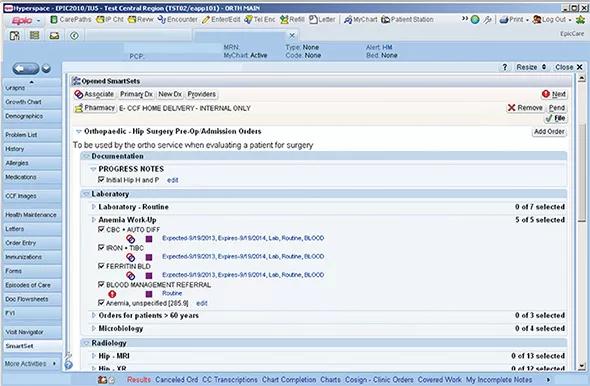
Figure 1. Screen capture of order sets integrated into the electronic medical record under the new care paths.
Postop phase: Consistent follow-up informed by real-time data
The THA and TKA care paths ensure that the time frame in which we follow our patients is now consistent from provider to provider. Patient-reported outcomes are systematically captured at these visits (Figure 2), allowing for monitoring of complications as well as patient satisfaction. These data are available to providers in real time, enabling better monitoring of patient progress. The value of these capabilities cannot be overstated as we all aim to provide high-quality, low-cost care.
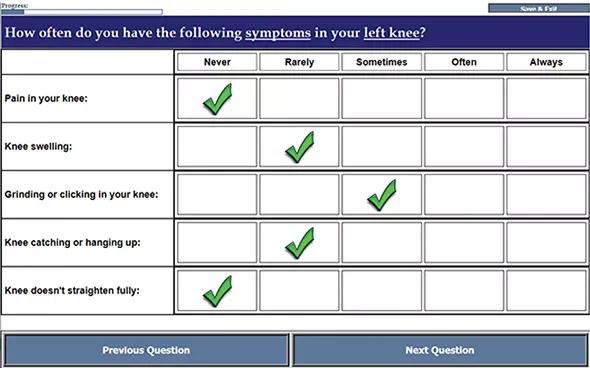
Figure 2. Screen capture of a question from the electronic forms patients complete to supply real-time data for progress monitoring during follow-up.
The big picture on care paths
As providers are increasingly held accountable for the quality and cost of care delivered, we are striving to reduce variability in cost and outcome across our health system. These new THA and TKA care paths, through their integration into the EMR and the attention they focus on value oriented care decisions, are encouraging and empowering our orthopaedic clinicians to provide care of the highest value. By prompting us to solve problems in more multi-disciplinary, patient-centered ways, they are also transforming the culture of our practice in important regards. And by allowing monitoring of practices by location and by individuals, they can help ensure that best practices are followed and help focus efforts to promote adherence when needed.
As providers take on more and more of the financial risk of healthcare delivery, we believe tools like these will be paramount to the overall success of our organization and others like it.
A related value innovation: Rapid return function for selected total joint arthroplsty patients
Physicians across Cleveland Clinic health system are pioneering techniques to enable a more rapid return of function for our THA and TKA patients. Multidisciplinary teams have been assembled at several hospitals in the health system as well as at our outpatient surgery center in Avon, Ohio (a suburb west of Cleveland), to mobilize appropriate total joint arthroplasty patients more quickly, allowing THAs and TKAs to be performed as outpatient procedures in properly selected patients.
The teams consist of orthopaedic surgeons, pain medicine specialists, anesthesiologists, nurses, physical therapists and case managers, all providing coordinated care to ensure the best possible patient outcomes and a safe transition home.
After refining these protocols at smaller hospitals and an ambulatory surgery center within our health system, we are in the process of taking the lessons learned and applying them systemwide. We look forward to sharing our results and experiences in the coming months and years.
— By the authors and Michael Kolczun II, MD, a Department of Orthopaedic Surgery physician who has led the initiative at the outpatient surgery center
About the authors
Dr. Murray is a staff physician in the Department of Orthopaedic Surgery’s Center for Adult Reconstruction. He can be reached at 216.444.3743 or murrayt2@ccf.org.
Dr. Molloy is Director of the Center for Adult Reconstruction. He can be reached at 216.445.5226 or molloyr@ccf.org.
References
1. Kurtz S, Ong K, Lau E, Mowat F, Halpern M. Projections of primary and revision hip and knee arthroplasty in the United States from 2005 to 2030. J Bone Joint Surg Am. 2007;89(4):780-785.
2. Barsoum WK, Murray TG, Klika AK, et al. Predicting patient discharge disposition after total joint arthroplasty in the United States. J Arthroplasty. 2010;25(6):885-892.
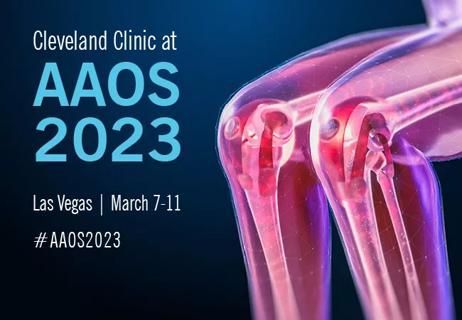
See you in Las Vegas, March 7-11
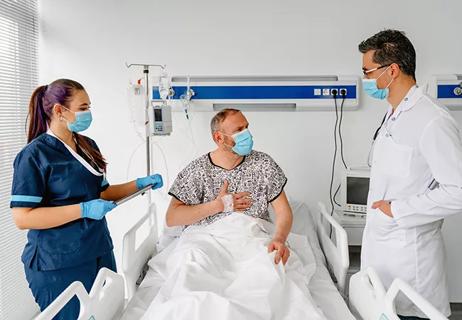
Cross-team efforts improve plan-of-care visits, update readmission strategies and increase compliance with Universal Protocol
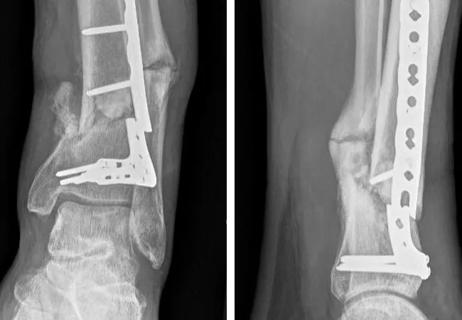
Approaching distal tibial nonunions
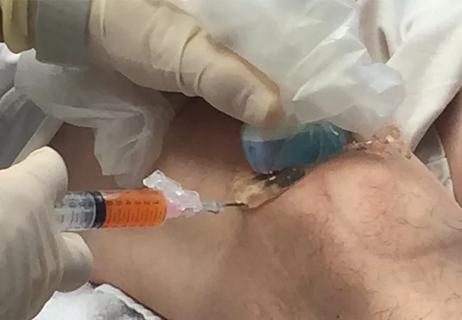
Progress has been made, but there is still no categorical evidence of efficacy

Novel approach combines magnetic hyperthermia, amino acid gel to disrupt bacterial biofilm

Organizing and overseeing joint preservation efforts
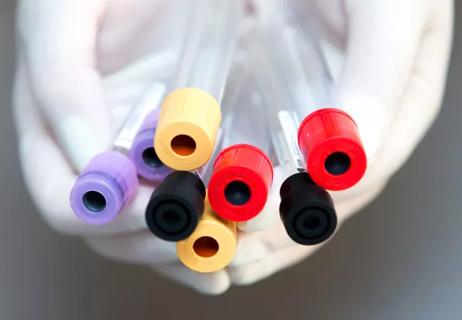
Understanding applications, tracking outcomes and creating standards for use
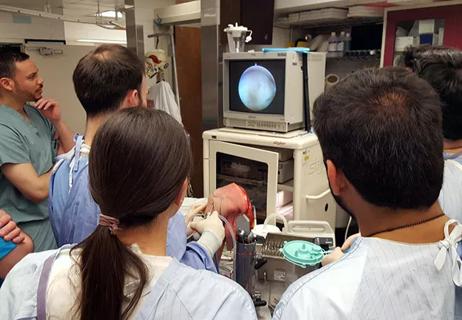
High-tech educational program scores well